Swords have always been central to close-range combat, and even today, modern soldiers are required to be adept in the use of these simple but deadly weapons. While various civilizations have evolved their own unique sword designs, the Japanese swords, also known as “Nihonto,” are revered for their beauty, craftsmanship, and historical significance.
1. Katana: The Iconic Samurai Sword
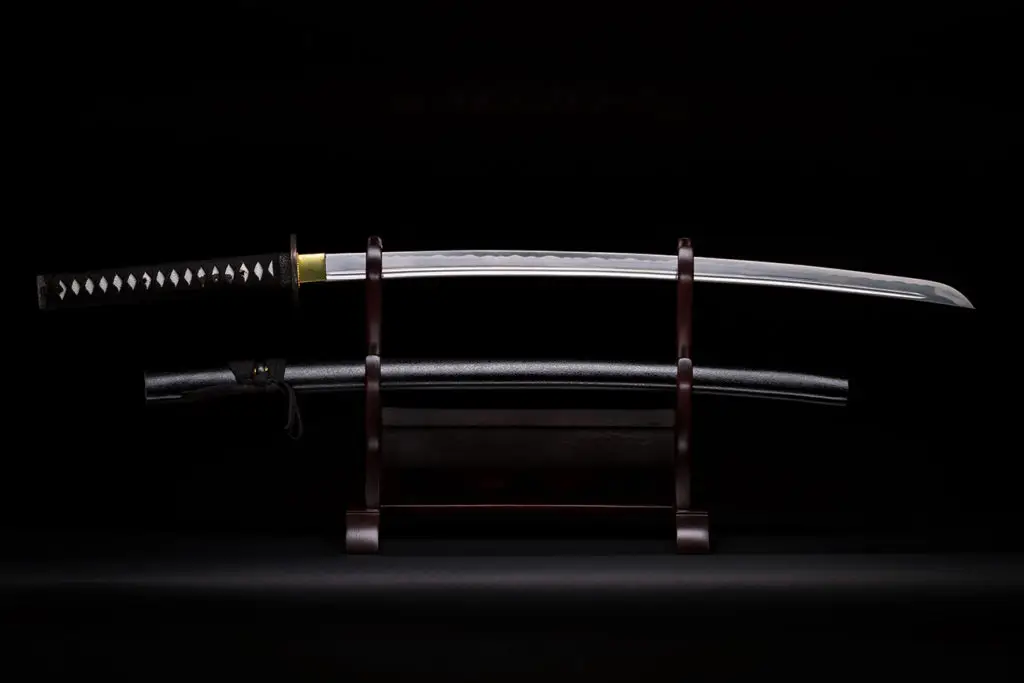
When most people think of a Japanese sword, the katana is likely the first to come to mind. The katana is perhaps the most famous of all Japanese swords, known for its curved, single-edged blade, circular or squared guard (tsuba), and long grip to accommodate two hands.
The katana was developed during the late Kamakura period (1185–1333) and gained prominence during the Muromachi period (1336–1573). It was designed for quick, precise strikes, making it ideal for the close-quarters combat favoured by the Japanese samurai and Ninjas.
Blade Characteristics of the Tachi
The blade of a katana is typically around 60 to 80 cm long. It is forged using a traditional process that involves folding the steel multiple times to create a blade that is both sharp and resilient. The distinctive curvature of the blade, called “sori,” enhances its cutting ability.
2. Tachi: The Predecessor to the Katana
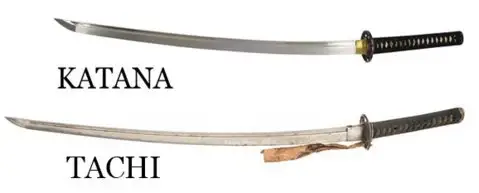
The tachi is a predecessor to the katana and is thus similar to it in many respects. The tachi was primarily used by cavalry during the Heian period (794–1185) and Kamakura period. The sword’s design was suited for slashing from horseback. It has an additional curvature that allows for more effective cutting motion.
Over time, as combat styles shifted from cavalry battles to infantry engagements, the tachi evolved into the katana. Some old tachi were refitted with katana fittings to suit the changing demands of warfare.
Blade Characteristics of the Tachi
The tachi is generally longer and more curved than the katana, with a blade length often exceeding 70 cm. It was worn edge-down with the blade facing away from the body, unlike the katana, which is worn edge-up.
3. Wakizashi: The Samurai’s Companion Sword

The wakizashi served as a backup weapon for the samurai. It was also used in close-quarter combat situations where a longer sword would be unwieldy. The wakizashi was also the weapon of choice for the ritual suicide known as seppuku, a practice that was considered an honourable death for a samurai.
While the katana was the symbol of the samurai’s martial prowess, the wakizashi was a symbol of the samurai’s personal honour. Samurai often carried the wakizashi at all times, even when the katana was left at the entrance of a building.
Blade Characteristics
The wakizashi is a shorter sword, typically measuring between 30 to 60 cm in blade length. It is often paired with the katana in a daisho, which is the traditional pairing of a long sword (katana) and a short sword.
4. Tanto: The Dagger of the Samurai
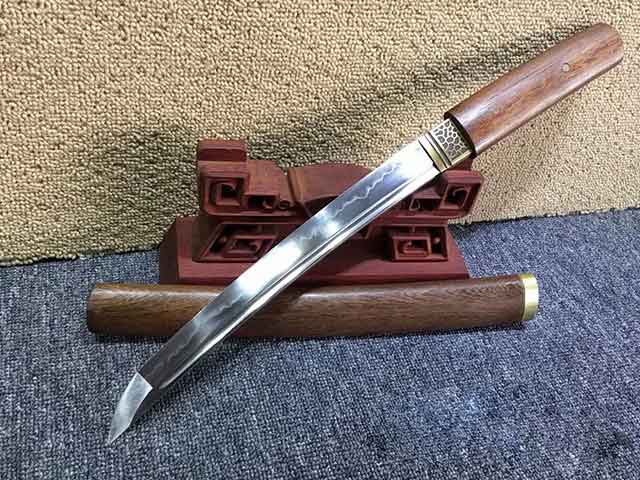
The tanto is a small dagger that was primarily used for stabbing, but it could also be used for slashing in close combat. It was effective in situations where larger swords were impractical, such as in confined spaces or during surprise attacks.
Beyond its practical use, the tanto hIt was often given as a gift to mark special occasions or to signify a bond between samurai. In addition, the tanto was sometimes used in ritual suicide, much like the wakizashi.
Blade Characteristics
The tanto is a small dagger, usually with a blade length of less than 30 cm. It is a single or double-edged blade that is generally straight, although some variations have a slight curve. It was often ornately decorated, especially during the Edo period (1603–1868), when the emphasis on aesthetics in sword-making reached its peak.
5. Nodachi and Odachi: The Massive Battlefield Swords
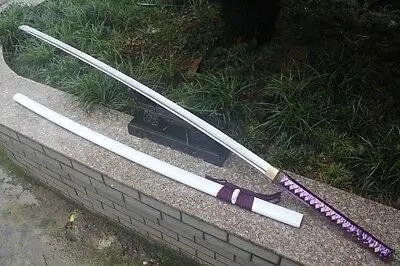
The Nodachi and odachi are massive swords that were used on the battlefield, primarily during the Nanboku-cho period (1336–1392). These swords were so large that they were almost exclusively used on foot, as their size made them impractical for mounted combat.
These swords were designed for open-field battles, where their long reach and powerful strikes could be fully utilized. They were often used to cut down enemy cavalry or to break through enemy lines.
Blade Characteristics
Nodachi and odachi blades could exceed 90 cm, with some reaching lengths of over 120 cm. These swords were incredibly heavy, requiring great strength and skill to wield effectively. The curvature of these swords was more pronounced to enhance their cutting power.
Due to their size and the skill required to use them, Nodachi and Odachi were as much a display of a warrior’s strength as they were weapons.
6. Naginata: The Samurai’s Polearm
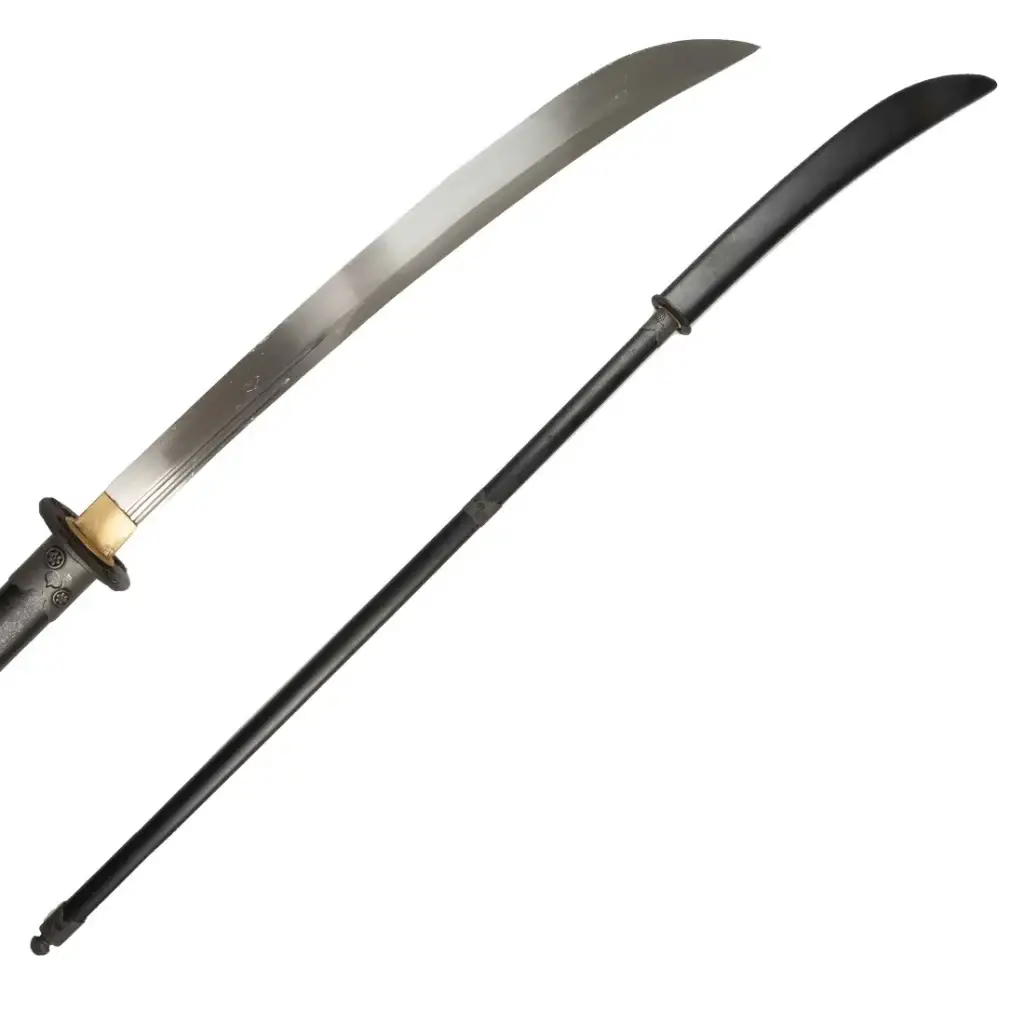
While not a sword in the strictest sense, the naginata deserves mention due to its prominent role in samurai warfare. The naginata is a polearm with a curved blade, similar in shape to the katana, mounted on a long wooden shaft.
The naginata was highly effective against cavalry and could be used to sweep away multiple enemies with broad, arcing strikes. It was favoured by samurai and warrior monks alike for its versatility and reach.
Blade Characteristics
The blade of the Naginata sword typically measures between 30 to 60 cm, while the shaft can be over 2 meters long. This combination allowed the samurai to strike from a distance while maintaining an impressive cutting power.
Over time, the naginata became associated with women of the samurai class, particularly during the Edo period, when it was often used in training and as a means of self-defence. Today, the naginata is practised as a martial art, known as naginata-do.
7. Yari: The Samurai’s Spear
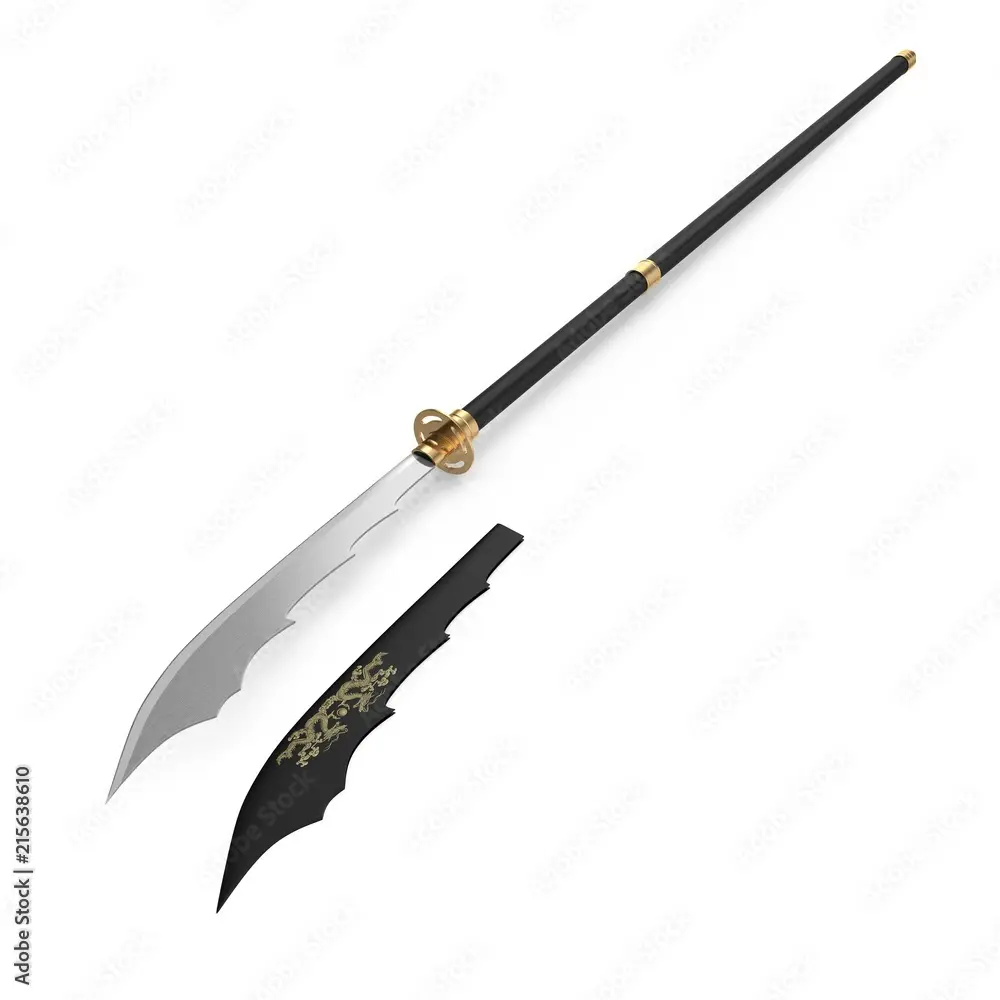
The yari is another polearm that played a crucial role in samurai warfare. Unlike the naginata, the yari has a straight blade, which could range from a few centimetres to over a meter in length.
The yari was versatile and capable of thrusting, slashing, and even parrying enemy attacks. It was highly effective in both individual combat and large-scale battles, where formations of yari-wielding soldiers could present an almost impenetrable wall of blades.
Blade Characteristics
The yari blade could be single or double-edged, and there were various styles of yari, each with specific uses. The most common type, the su-yari, had a simple straight blade, while more complex designs like the kama-yari had additional side blades for catching and disarming opponents.